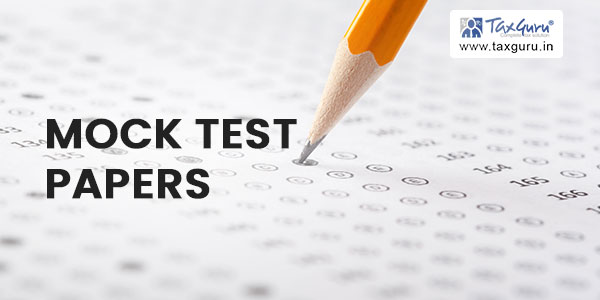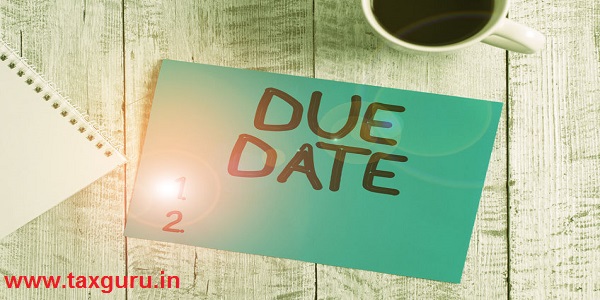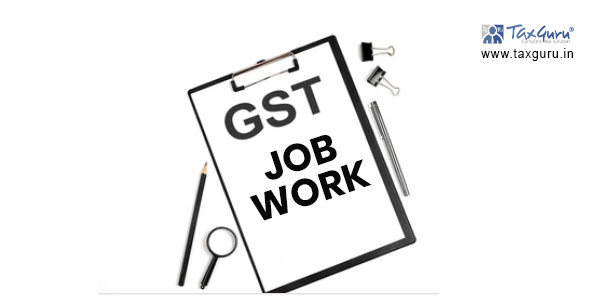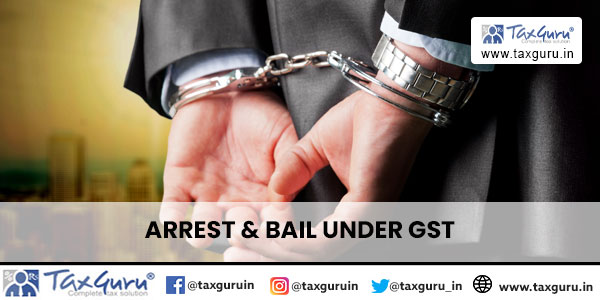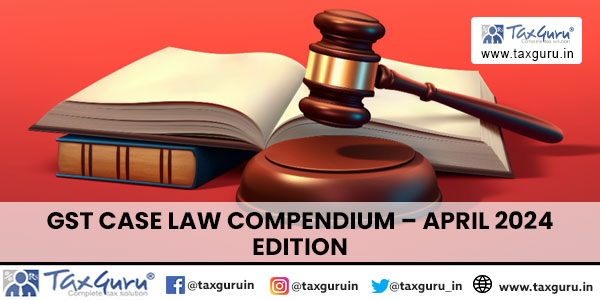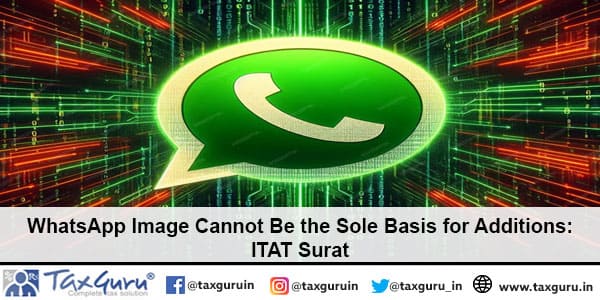Input Tax Credit under CGST and its Comparison with Position of Law Present in India and in Canada[1]
Introduction
One of the biggest advantages expected from the implementation of GST Act is that it would remove cascading effect by facilitating seamless flow of credit. This would be given effect by providing for the availment of Input Tax Credit (ITC) to the purchasing dealer in respect of the tax (GST) paid by the supplying dealer.
Chapter V of the CGST Act deals with the provisions regarding availment, utilization and distribution of credit. Section 2(63) of Act defines input tax credit as credit of central tax, State tax, integrated tax or Union territory tax charged on any supply of goods or service including import of goods and tax paid under reverse charge mechanism to a taxable person which is used or intended to be used for the purpose of business or commerce.
The whole concept of availment of input tax credit (ITC) is set to change from present system of availment of credit as part of self-assessment scheme to electronic matching of credit with supplier wise, invoice wise and item HSN code wise matching.
Basic conditions for availment of credit are mentioned in Section 16(2) of CGST[2]. Failing which the credit can be denied to the purchasing dealer. One of the stipulations provided for availing ITC is stated in Section 16(2)(c) of the CGST Act is the requirement of tax being paid by him must have been deposited by the supplying dealer to the credit of the appropriate Government.
The provision seems to be enacted with the intention to make purchasing dealer more vigilant in their dealings with supplying dealers and thereby ensure compliance by all the dealers in the chain of supply. It seems to be enacted with the intention to prevent dealings in invoices without movement of goods so as to check tax evasion by dealers. However, it may have far reaching ramifications and open a Pandora’s box of litigation.
1. The provision has the effect of denying credit to a bona fide purchasing dealer even if he has paid GST to the supplying dealer.
2. It is a trite law and an accepted principle of natural justice that a person cannot be punished for the fault of another. [3]
3. It is against the principles enshrined in Article 14 of the Constitution.
4. The provision can also be misused by supplying dealer as he may affect the supply and abscond with the tax collected from the purchasing dealer.
5. It is stated that the issue whether a bona fide purchasing dealer can be denied credit in case of default of supplying dealer is no longer res integra. In the case of M/s Gheru Lal Bal Chand Vs. State of Haryana & Another[4], the Hon’ble Punjab & Haryana High Court considered the provisions of Section 8(3) of the Haryana VAT Act, 2003 (HVAT Act) and the rules framed under the Act. The question before the Court was whether a purchasing dealer can be held liable and denied ITC for input tax which has been recovered from him by the registered selling dealer but has not been paid by the latter to the Government treasury. The Court held that it would be an absurd interpretation of law to read it as one which seeks to penalize a bona fide purchasing dealer and deny him credit and put the defaulting selling dealer in an advantageous position. It is difficult to hold that such a law would be constitutionally valid. The provisions were read down to deny input tax credit only in the event of collusion between the buyer and seller.
6. It would be exorbitantly onerous to require a purchasing dealer to ascertain and ensure that tax has been paid by the supplying dealer to the appropriate Government, due to numerous supplier and some them could be casual taxable person[5] The law cannot be said to be imposing an onerous condition which is impossible of compliance i.e. following the maxim “lex non cogit ad impossibilia”.
GST is required to be paid at the time of supply[6] which talks about earlier of the two i.e. date of issue of invoice or date of receipt of payment. However, credit is allowed only when all the conditions of credit in Section 16 are satisfied.
This will result in gap of crucial days between actual payment of GST by supplier and allowance of credit to recipient. This gap will be mainly in case of GST paid on advance receipt since condition for availment of credit requires that goods and/or services should have been received. Also, Section 28(3) provides that receipt voucher shall be issued in case of advance receipt. Receipt voucher, not being a tax invoice, is unclear whether it will be considered as eligible document for availment of credit.
However, definition of taxable service in Finance Act, 1994 covers service provided or to be provided. A view is generally taken that on payment of advance, services should be considered as received and credit is eligible. But under GST, even such view is not possible even though definition of supply covers supply of goods and/or services which are provided or agreed to be provided. But, as per Section 16[7] of CGST Act, does not state that supply should have been received for availing credit rather it requires goods/ services have been received. Thus, credit wit not be eligible merely because advance payment has been made for goods or services.
Canada Position
The Excise Tax Act of Canada provides that the ITC can be claimed for GST/ HST paid or payable on your purchases and expenses related to your commercial activities only to the extent that your purchases and expenses are for consumption, use, or supply in your commercial activities. To claim an ITC, the expenses or purchases must be reasonable in quality, nature, and cost in relation to the nature of your business.
Thus, there is additional requirement that is present in Canada in regard to reasonable quality, nature and cost. Apart from this Canada allows ITC for payable GST/ HST which is missing in Revised Model GST which mandatorily requires the tax to be deposited with appropriate government.
Goods or Service on which Input Tax can’t be availed
The CGST has restricted the availment of input tax credit on following goods/services. The list is relatively same with previous fiscal laws. The author has compared the two. Section 17(5) deals with the same. It provides that –
a) Motor vehicles and other conveyance with certain exception[8]. There is similar provision in Cenvat rules.[9] The question arises that whether ITC will be available on self supplying transportation service reason being self transportation is not taxable and it is difficult to be valued. The other view is to include it for promotion of seameless flow of credit. The Canadian Tax Court judgment in Perron v R[10]. on whether a welder who purchased a vehicle to be used in commercial activities could deduct input goods and services tax (GST). The service provider need to produce sufficient evidence to demonstrate that the vehicle was used exclusively in commercial activities.[11]
(b) supply of goods and services
(i) food and beverages, outdoor catering, beauty treatment, health services, cosmetic and plastic surgery[12]– exception where inward and outward taxable supply of the same category of goods or services. The position is altered which was held in case of Stanzen Toyotetsu India[13], affirmed in 2011 by Karnataka High Court[14] which held that outdoor caterer services for providing food to staff because of statutory obligation imposed under Section 46 of Factories Act, 1948 and credit was available.
(ii) membership of a club, health and fitness centre[15],
(iii) rent-a-cab, life insurance, health insurance[16]exception government obligation. In Milipore India Ltd Vs CCE Bangalore[17] affirmed Karnataka High Court[18] and in reliance case[19] that health insurance of employee there was no restriction on availment of such insurance credit. The CGST Act only allows it in case only in case of statutory obligation like held in case of Micro Labs Ltd[20] which held that Group Insurance Health Policy though a welfare measure is an obligation cast under statute that employer has to obey. Thus, Service tax paid on all services utilised directly or indirectly in or in relation to final product eligible as credit.
(iv) travel benefits extended to employees on vacation such as leave or home travel concession. [21]
(c) works contract services when supplied for construction of immovable property, other than plant and machinery, except where it is an input service for further supply of works contract service; [22] Thus, works contractor can only avail input credit of works contract services and input tax credit shall be available only if such services are used for provision of works contract and not for personal use. In Red Hat India Pvt Ltd[23]the works contract service, the credit has been for monthly maintenance of photocopier, computer and building premises of the appellant. Tribunal held Works Contract Services are excluded only when used for construction services.
Thus, it is change in position of prior law which excluded construction service.
(d) goods or services received by a taxable person for construction of an immovable property on his own account, other than plant and machinery, even when used in course or furtherance of business[24];
(e) goods and/or services on which tax under composite levy[25];
(f) goods and/or services used for personal consumption[26];
(g) goods lost, stolen, destroyed, written off or disposed of by way of gift or free samples; and[27]
(h) any tax paid in terms of sections 67, 89 or 90
The most of provision are similar to earlier laws, the limited change that can be observed is that Input tax credit of taxes paid on insurance and repair of motor vehicle shall be available under CGST which is presently prohibited under current indirect tax statute[28].
Apart from this the double benefit under different legislation is still prohibited.[29]
Canada Position
The Excise Tax Act of Canada in Section 169 discusses general ITC. The amount[30] that can availed depends on if it is considered an operating expense[31] or a capital expense[32]. The Act provides non availability of ITC in cases of –
- certain capital property
- taxable supplies of property and services bought or imported to make exempt supplies of property and services
- membership fees or dues to any club whose main purpose is to provide recreation, dining, or sporting facilities (including fitness clubs, golf clubs, and hunting and fishing clubs), unless you acquire the memberships to resell in the course of your business
- property or services you bought or imported for your personal consumption, use, or enjoyment
Canada ruling in 630413NB Inc Vs R.[34] on whether a company managing legal proceedings which had been assigned to it was entitled to claim ITC in respect of legal fees it paid. The court considers whether the company was carrying on a commercial activity of controlling the legal proceedings and on that basis allow ITC.[35]
The position is similar to India but the list is comparatively very small when compared to India which doesn’t allow ITC on several instances.
Further Canada has different percentage of ITC available for different categories. For example the operating expenses if commercial activity is 90% or more then ITC available is 100%, then 10% to 90% is Percentage of use, then below 10%, no ITC available. ITC eligibility on meals and entertainment expenses is 50% for most business.
Availment of ITC of Capital Goods
Under the CGST, the Input Tax credit on capital goods shall be available in the year of its receipt. Thus, it is interesting to note that in comparison to present indirect tax structure[36] where Cenvat Credit of duty paid on capital goods is available in installments[37], the CGST Act has allowed the entire input tax credit on capital goods in the year of receipt of goods thereby reducing the working capital needs of the assessee.
Apart from this the apportionment provision has been changed. CGST Act provides for more simplified procedure for availment of input tax credit on capital goods, inputs and input services used for supply of exempted goods/ services and taxable goods/ services.
Every assessee shall be entitle to avail full input tax credit of tax paid on capital goods, inputs and input services which are exclusively used for supply of taxable goods/ services, whereas in following cases, proportionate input tax credit shall be available to the assessee:
- Goods or services are used partly for business and partly for other purposes;
- Goods or services are used partly for supply of taxable goods/ services and partly for exempted goods/services.
Section 17 seeks to cover those situations where credit is claimed on goods/ services which are used partly for taxable supplies including zero rated supplies and partly for exempted supplies. The said provision is based on the very rational reason that only credit of those goods/ services is allowed which are used for taxable supplies. However, even the credit on capital goods needs to be apportioned in GST if they are used for both taxable and exempt supplies. Currently Cenvat Credit Rules do not require such apportionment of credit on capital goods. Only common credit in respect of input and input services is required to be apportioned as per Rule 6(2) and Rule 6(3) of Cenvat Credit Rules.
The present regime, CENVAT Credit Rules permits full CENVAT Credit on capital goods if such goods are used for supply of exempted goods/ services and taxable goods/ services.
But the CGST Law it shall impose obligation on assessees to reverse proportionate input tax credit on capital goods also.
Canada Position
The GST/ HST registrant has to determine the percentage of use of Capital Goods in commercial activity. If both commercial activities and non-commercial activities (such as exempt supplies) are performed the registrant has to apportion the GST/ HST paid or payable for the property or service between these two activities.[38] The method used to determine the percentage of these expenses used in commercial activities has to be fair and reasonable and used consistently throughout the year.
Eg.
1) To claim ITCs for home office expenses, it is allowed only if the work space is:
- your principal place of business
- used 90% or more to earn income from your business and used on a regular and continuous basis for meeting your clients, customers, or patients
2) In case capital personal property is used for 50% or less in commercial activities, No ITCs can be availed . However if later more than 50% is used for commercial activities, then it is considered the property is purchased that time and GST/HST ITC can be availed.[39]
3) Similarly if the same is decreased below 50% it is assumed that property is sold and party has collected GST/HST.
In Quebec Inc v R[40] the court decided on whether a company could claim an ITC on the purchase of a car driven by its shareholder partly on company business and partly for personal purposes. Thus, court gave the test of whether the car was purchased primarily for use in commercial activities.[41] Similarly in Nelson v R.[42] on a claim by taxpayers for ITC in respect of their purchase of a vehicle which was used 54 per cent for business purposes and 46 per cent for personal purposes[43].
The position of apportionment is quite similar with India, but, the 50% criteria of commercial activity is an additional requirement posed by Canada Revenue Department.
Utilization Of Input Tax Credit
Every assessee shall be entitle to utilize the eligible input tax credit of tax paid on supply of capital goods, inputs and input services and as available in its electronic credit ledger in its return on self assessment basis[44].
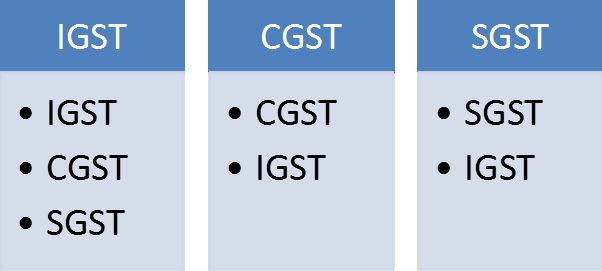
Cross Utilization of input tax credit of CGST and SGST has been prohibited in the model GST law[45]. It is unlikely that restriction on cross utilization of input tax credit of CGST and SGST will have any adverse impact on the assessee as they can adjust input tax credit of CGST and SGST with IGST and vice versa.
Thus, the present position of law is completely changed as the Cenvat Credit Rules allowed usage of Credit only for payment of Excise and Service Tax and the individual state had different rules for their VAT Act. Now with GST, the Input Tax Credit can be used for goods and service. Thus, expanding the scope and making it seamless flow of credit, although there is still prohibition on cross use of CGST and SGST.
Further scope of utilization of Input Tax Credit has widened as it the amount available in the electronic cash ledger may be used for making any payment towards tax, interest, penalty, fees or any other amount payable under the provisions of the Act and Rules.[46]
Canada Position
The GST/ HST registrants can claim ITC in four years. This includes all registrants (other than financial institutions) with sales under $6 million. A two year limit applies to certain financial institutions and some businesses with more than $6 million in sales. [47]
Issues in the Input Tax Credit Regime under GST
1) Credit on advance payment-It appears the credit shall not be eligible in case of advance payment as Section 16 of CGST does not state that supply should have been received for availing credit rather it requires goods/ services have been received. Thus, credit wit not be eligible merely because advance payment has been made for goods or services. [48]
2) Credit on receipt of last lot of goods[49] – Where the goods against an Invoice are received in lots or Installments credit is eligible on receipt of the last lot or installment. This unnecessary condition could result in significant delay in availment of credit. If the goods are imported and from port goods are received in factory in lots, then credit is eligible only when the last lot is received[50].
3) Payment to supplier of services within three months- Second proviso to Section16(2) states that where the recipient fails to pay supplier of service the value of service within three months from the date of issue of invoice, then credit claimed is required to be reversed along with interest. This condition is similar to present condition in Cenvat Credit Rules under Rule 4(7). But in GST credit is required to reversed along with Interest. Further, if payment is made to supplier after three months, then the provision about credit eligibility of reversal made earlier is not mentioned in GST law. This omission appears to be unintentional and the final law is expected to provide for the same.
4) All Vendor falling in chain of supply must pay tax- The Input Tax Credit will not be available in case[51]:
I. Where vendor has not paid tax and assesse is not able to take credit.
II. invalid tax paid by vendor anyone in chain of supply.
5) Input tax credit chain could be stuck and the ultimate motive of GST could be diluted.
6) The GST Act further provides that the recipient/ purchasing dealer shall be entitled to reduce from his output tax liability the amount which has been subsequently declared by the supplying dealer. This again leads to a situation where the recipient/ purchasing dealer is dependent on the declarations made by the supplying dealer and if the output tax is not paid/ declared or incorrectly paid/declared by the latter, then the same unfairly prejudices the purchasing dealer as it results in denial of credit to him.[52]
7) Blockage of ITC at various stages.
8) Obligation on assessees to reverse proportionate input tax credit on capital goods not completely used for business purpose.
[1] Shivam Garg, 5th Year Student at National Law University, Jodhpur
[2] a)Recipient is in possession of a Tax invoice or debit note issued by a supplier registered under the Act, or such other taxpaying document(s) as may be prescribed.
b) Recipient has received the goods and/ or services.
c) Subject to the provisions of Section 41, the tax charged in respect of such supply has been actually paid to the Government, either in cash or through utilzation of Input tax credit admissible in respect of the said supply.
d) Return under Section 39 has been filed.
[3] Saurabh Bhutra, Associate Lakshmikumaran &Sridharan, Input tax credit availment under the GST law, available at http://www.taxindiaonline.com/RC2/print_story.php?newsid=27464 visited on 22/2/2017
[4] M/s Gheru Lal Bal Chand v. State of Haryana & Another, 2012 (2) SCC 781 (P&H)
[5] Section 2(20) of the Revised Model GST
[6] Section 13 of Revised Model GST
[7] Section 16 of CGST Act.
[8] Section 17(5) of CGST Act
(a) motor vehiclesand other conveyances except when they are used
(i) for making the following taxable supplies, namely
(A) further supply of such vehicles or conveyances ; or
(B) transportation of passengers; or
(C) imparting training on driving, flying, navigating such vehicles or conveyances;
(ii) for transportation of goods.
[9] 2(k) excludes (D), Cenvat Credit Rules
[10] Perron v R. [2012] GSTC 95 (Tax Ct (Can))
[11] David M. Sherman, Canada: Input Tax Credits – Motor Vehicles, I.V.M. 2013, 24(1), 54-55
[12] 2(l) Excludes (c), Cenvat Credit Rules
[13] Stanzen Toyotetsu India Pvt. Ltd. vs. C. C. Ex., Bangalore-1112009 (14) S.T.R. 316 (Tri. — Bang.)
[14] Commissioner of Central Excise Vs. Stanzen Toyotetsu India (P) Ltd., 2011 (23) STR 444 (Kar.)
[15] 2(l) Excludes (c), Cenvat Credit Rules
[16] 2(l) Excludes (c), Cenvat Credit Rules
[17] Milipore India Ltd Vs CCE Bangalore —II (2009 (236) ELT 145 (Tri-Bang)
[18] 2012 (26) STR 514
[19] Reliance Industries decision (2015-TIOL-181-CESTAT-MUM).
[20] CCE & ST. LTU, Bangalore vs. Micro Labs Ltd. 2012(26) STR 383 (Kar)
[21] 2(l) Excludes (c), Cenvat Credit Rules
[22] 2(l) Excludes (A), Cenvat Credit Rules
[23] Red Hat India Pvt Ltd vs. Principal Commr, Service Tax, Commissionerate, Pune (2016-TIOL-1300- CESTAT-MUM)
[24] 2(k) excludes (A), Cenvat Credit Rules
[25] Multiple State VAT Act provide for exclusion of composition levy
[26] 2(k) excludes (E), Cenvat Credit Rules
[27] Multiple State VAT Act provide for exclusion of goods , which are not sold because of theft, damage or destruction and goods are purchased for sale, but given away as free sample or gift
[28] 2(l) (BA), Cenvat Credit Rules.
[29]Section 16 (3) of the Revised Model GST- Where the registered taxable person has claimed depreciation on the tax component of the cost of capital goods under the provisions of the Income Tax Act, 1961(43 of 1961), the input tax credit shall not be allowed on the said tax component.
[30]Calculate input tax credits – Types of purchases and expenses, available at http://www.cra-arc.gc.ca/tx/bsnss/tpcs/gst-tps/bspsbch/itc-cti/hwt/prtng-eng.html visited on 24/3/2017
[31]Operating expenses for which ITCs available
- commercial rent
- equipment rentals
- advertising (for example, ads, business cards, or flyers)
- legal, accounting, and other professional fees
- delivery, freight, and express fees
- home office expenses (restrictions apply, see Line 9945 – Business-use-of-home expenses)- http://www.cra-arc.gc.ca/tx/bsnss/tpcs/slprtnr/rprtng/t2125/ln9945-eng.html
- motor vehicle expenses (restrictions apply, see Motor vehicle expenses) – http://www.cra-arc.gc.ca/tx/bsnss/tpcs/slprtnr/bsnssxpnss/mtr/menu-eng.html
- maintenance and repairs
- telephone and utilities
- office expenses (such as postage, computer disks, paper, and pens)
- merchandise and inventory
- travel such as hotel, airfare, rail fare, or car rental (except expenses for meals and entertainment related to travel)
- convention fees
[32] Capital expenses for which ITCs available
Capital property, for GST/HST purposes, is based on the meaning of the term for income tax purposes and includes:
- depreciable property (property that is eligible for capital cost allowance for income tax purposes)
- other property that would result in a capital gain or capital loss for income tax purposes if you disposed of it
Examples of capital expenses for which you may be eligible to claim an ITC are:
- photocopiers, computers, and cash registers
- machinery and vehicles
- furniture and appliances
- musical instruments (only if you are an individual who is a GST/HST registrant and you use it for employment purposes or in a business carried on by a partnership of which you are a member)
- improvements to capital personal property (only if you are using the property primarily (50%) in your commercial activity
Capital property for GST/ HST purposes does not include property described for income tax purposes that are categorized in the following:
- class 12 (such as chinaware, cutlery, and certain tableware)
- class 14 (certain patents, franchises, concessions, or licences for a limited period)
- proposed class 14.1(eligible capital property)
- class 44 (a patent or a right to use patented information for a limited or unlimited period)
[33] 8-2 General Restrictions and Limitations, available at http://www.cra-arc.gc.ca/E/pub/gm/8-2/README.html visited on 22/3/2017
[34] 630413NB Inc v R. [2016] GSTC 63 (Tax Ct (Can))
[35] David M. Sherman, Canada: Input Tax Credits – Commercial Activity, I.V.M. 2016, 27(5), 392
[36] State VAT Acts, provide “Input tax credit on capital goods will be given within 36 months after commercial production and first sale”
[37] Rule 4(2) of Cenvat Credit Rules
[38] Calculate input tax credits – Percentage of use in commercial activities, available at http://www.cra-arc.gc.ca/tx/bsnss/tpcs/gst-tps/bspsbch/itc-cti/cptl/clmngtcs-eng.html visited on 26/3/2017
[39] Capital personal property expenses, available at http://www.cra-arc.gc.ca/tx/bsnss/tpcs/gst-tps/bspsbch/itc-cti/hwt/xpnss/menu-eng.html#eligibilitypersonalproperty visited on 25/3/2017
[40] 9180-2801 Quebec Inc v R. [2011] GSTC 37 (Tax Ct (Can))
[41] David M. Sherman, Canada: Car Used Primarily Personally By Shareholder, I.V.M. 2011, 22(4), 281.
[42] Nelson v R. [2011] GSTC 72 (Tax Ct (Can))
[43] David M. Sherman, Canada: mixed-use passenger vehicle, I.V.M. 2011, 22(4), 282.
[44] Section 16 read with Section 44 of the Revised Model GST
[45] Section 49(5) of the CGST Act
[46] Section 49(3) of the CGST Act
[47] Determine the time limit to claim ITCs, available at http://www.cra-arc.gc.ca/tx/bsnss/tpcs/gst-tps/bspsbch/itc-cti/menu-eng.html visited on 24/3/2017
[48] Gagan Gugnani, Associate Lakshmikumaran & Sridharan, Challenges in Availment of Input Tax Credit under GST, available at http://www.lakshmisri.com/News-and-Publications/Publications/Articles/Tax/challenges-in-availment-of-input-tax-credit-under-gst visited on 25/3/2017
[49]Proviso, Section 16(2) of the CGST Act
[50]Key Input Tax Credit Provisions under Draft GST Law, available at http://www.gstindia.com/key-input-tax-credit-provisions-under-draft-gst-law/ visited on 21/3/2017
[51] Section 16(2)© of the CGST Act
[52] Saurabh Bhutra, Associate Lakshmikumaran &Sridharan, Input tax credit availment under the GST law, available at http://www.taxindiaonline.com/RC2/print_story.php?newsid=27464 visited on 22/2/2017.







